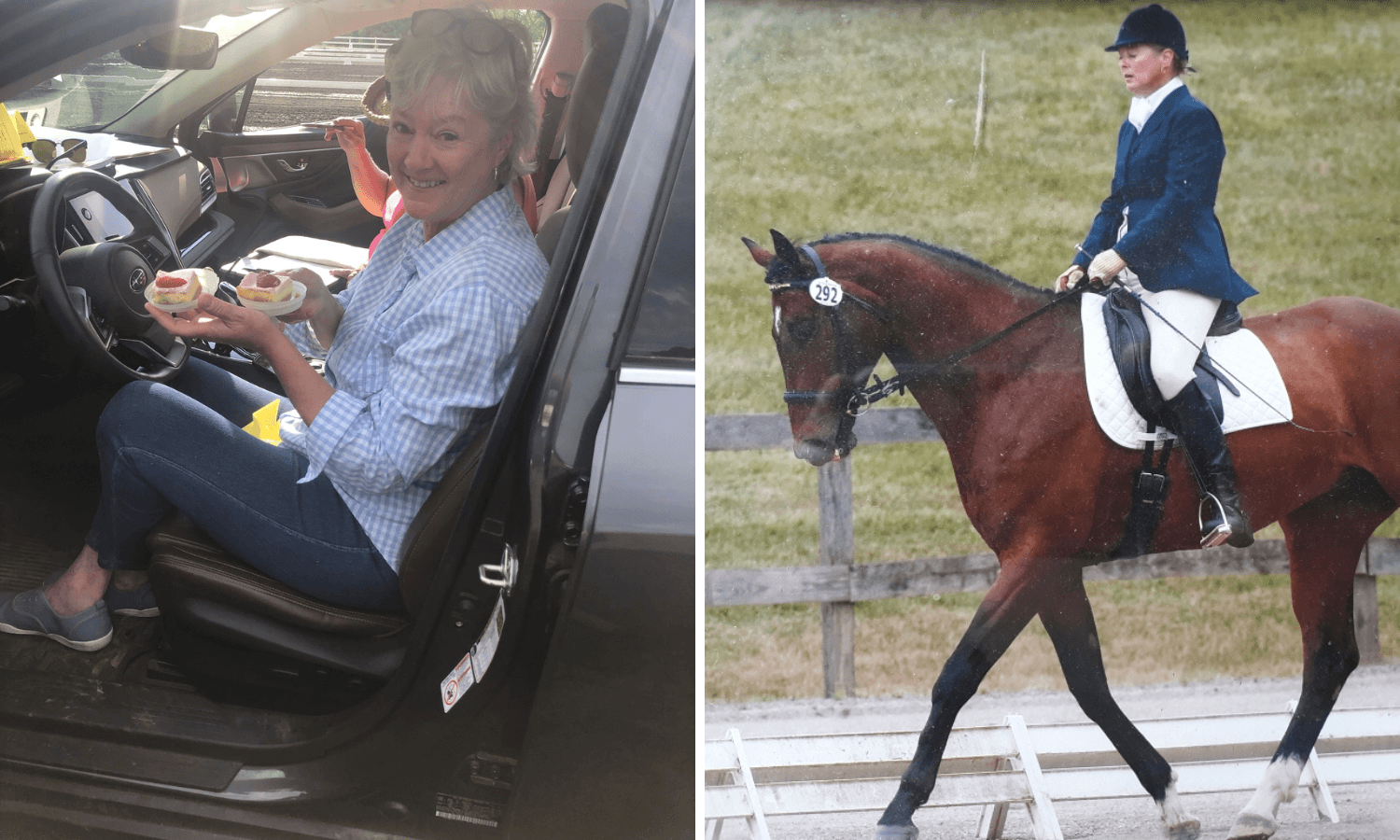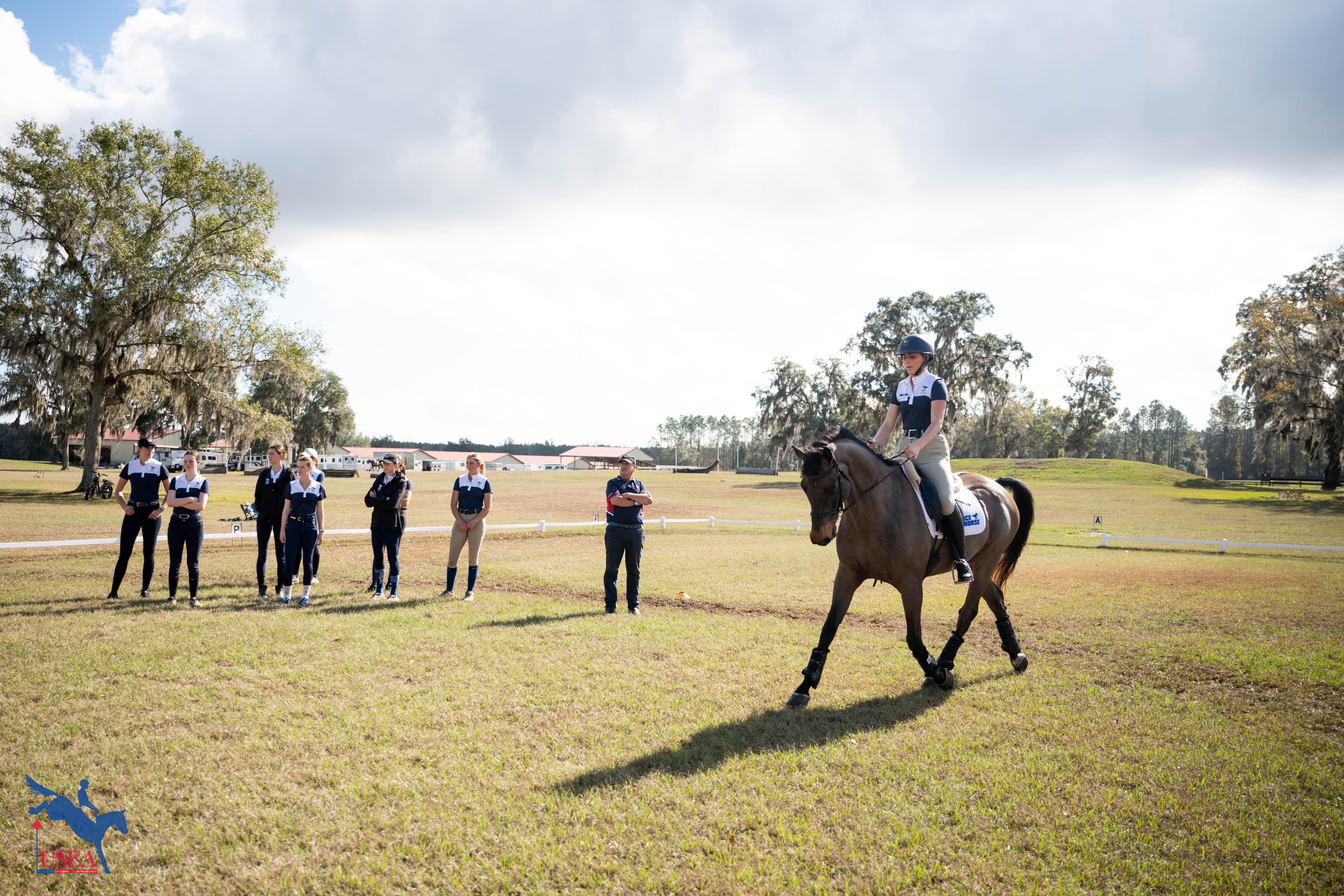A View from the Judge’s Box

Mary Grace is the kind of dressage judge every rider hopes will be waiting at C when they turn down center line. Having occupied a seat in the judge’s box (or car, as the case may be) for over three decades, she can practically recite the rulebooks from memory but nevertheless studies the relevant documents before every competition where she officiates, whether it’s a schooling show or a recognized event.
She will kindly but firmly inform you that your bit guard is illegal as you trot past her in your warm-up circle but – if there is any wiggle room in the schedule – allow you to remove said bit guard before your test begins. She is meticulous in following the rules and objectives that are her job to enforce but is equally generous in offering riders the benefit of the doubt whenever possible. If you enter the ring and start the wrong test – as the best among us have done at one point or another – she might ask you to go back out, learn the correct test, and come back in*. “Part of being a good judge is being an advocate for the rider,” Mary believes.
Mary’s compassion for riders and her deep understanding of and respect for the sport come from both her experience as a competitor and her extensive education as a judge. Growing up riding and competing in the Midwest, she trained as an eventer from her early years in pony club to competing through the Intermediate level on her Saddlebred gelding, Footloose. She first began judging dressage in the 1980s when schools like William Woods University and Stephens College (both in Missouri) began running schooling shows and combined tests.
“I didn’t have any real credentials at that point except I was moving up to Intermediate and hopefully had a little more information than other people did,” Mary laughs. “I was absolutely thrilled to do it though, and I knew immediately it was something I would want to pursue.”
At the time, dressage was experiencing a surge of new interest in the United States and dressage judging was becoming increasingly standardized. According to an article in the Chronicle of the Horse, dressage grew to become the second most popular equestrian discipline in the 1980s, with the USDF growing from a membership of 8000 at the start of the decade to 22,500 by the end. The USDF “L” Education Program was at the forefront of the sport’s evolution, coming about as response to the growing need for knowledgeable judges at the schooling shows that were popping up throughout the country. Completing the “L” program confirmed Mary’s investment in the process of becoming a judge, and she eventually went on to become an “r” judge licensed by the USEF. She now judges at competitions throughout Area II and also travels to judge competitions in Area I.
In Mary’s experience, the two elements in a dressage test that seem to be the most consistent score-killers are the free walk and attention to geometry. “I will frequently tell my scribe, ‘You’re going to wish we had a rubber stamp that we can put in the free walk that says – ‘Needs more stretch down and out,’” she says. “If you’re adhering to the training scale, when you allow the horse to take the reins from you, he’s going to seek the contact with the bit,” she continues. The free walk is the ultimate test of whether training is going along correctly. “It’s the proof in the pudding.”
Mary says she can often tell from the first part of the test if the free walk is going to be successful. “If the horse is behind the vertical; if his poll is really low; if he’s not honestly seeking the contact in the first part of the test, then you can throw your reins at him all you want but he’s not going to stretch into the contact during the free walk.” In addition to stretching toward the contact, the horse needs to have a sense of purpose in his stride. “The horse needs to want to get from point A to point B. He needs to look like he’s on a mission.” She often sees riders mistakenly taking the walk for granted and regarding it as an opportunity to take a breather. “I give big scores on the walk if it’s a good walk,” she emphasizes. And those scores make a significant impact on the “harmony” element of the final score.
The second element that many riders take for granted – especially at the lower levels – is geometry. If the test says a 20-meter circle, the rider needs to be precise. “Is the circle round? Is it 20 meters? Did the rider ride into the corners?” These are the questions Mary is asking as she watches the execution. “A circle doesn’t have corners so of course they shouldn’t be riding into the corners!” she notes. Conversely, she notices that many riders cut their corners when starting on their turns to the diagonal for the free walk or in the transitions at the short end of the ring. “Riders lose points when they are careless about the geometry of the test,” Mary says. Precision is key.
Holding herself to the same high standards that she expects from riders who enter her ring, Mary exemplifies the qualities of dedication, patience, fairness, and accuracy that we might wish all of our teachers and mentors – not to mention our judges – would possess. “To be a good judge, you have to be able to think fast on your feet,” Mary says, “And you have to be fair in what you’re looking at.” While she is careful to play by the rules, she is well aware that for many riders, her dressage ring might be a rider’s first introduction to the sport, and she is careful to ensure that this is a positive experience. At the final salute, this is perhaps what every rider – whether riding their first or five hundredth test – wants from a judge: to be seen not only as a sequence of prescribed movements but as an evolving and dynamic partnership with a much longer narrative than can be summarized by those few moments in the sandbox.
* Update: Please refer to the USEF Rules for Eventing for current regulations.














